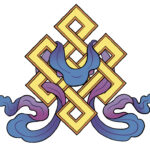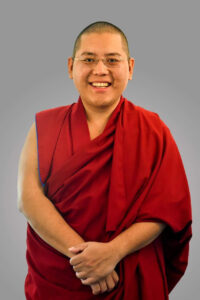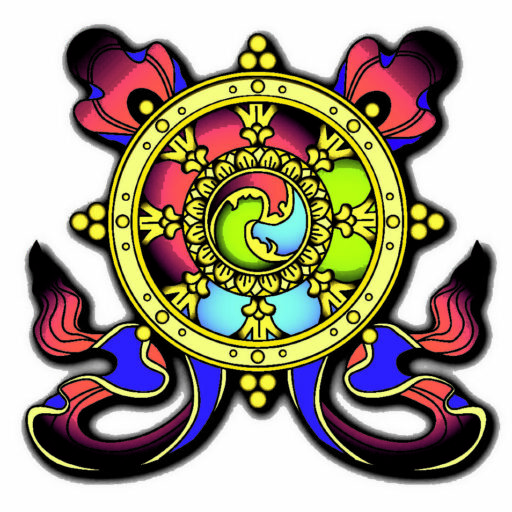by Martin Horan –
One of the most unusual and intriguing traditions within Tibetan Buddhism is that of the identification of reincarnated lamas. Where a renowned lama passes away, in some cases a child may later be identified as the reincarnation of that lama. As they mature, the child identified as the reincarnation may continue the Dharma activities of their predecessor.
Probably the best-known example of this tradition is that of His Holiness the 14th Dalai Lama. His Holiness is considered to be the latest incarnation of a lineage of Dalai lamas extending back to the 14th century.

Before he passed away, the 13th Dalai Lama left instructions regarding the identification of his reincarnation. The 14th Dalai Lama was recognised at the age of two. Auspicious dreams and omens led the search team to a small village in the Tibetan region of Amdo in 1936.
Famously, when he was presented with former possessions of the 13th Dalai Lama, mixed with many similar objects, the young boy, born to a family of farmers and horse traders, was able to select the possessions previously owned by the 13th with complete accuracy. You can also read “The search for His Holiness the 14th Dalai Lama” from this edition.
What exactly is a tulku or rinpoche?
Reincarnated lamas are known in Tibetan as tulkus. They are also known by the title rinpoche – a Tibetan term meaning precious one – although that title may also be used for some other high lamas as well, even if they have not been identified as tulkus.

The term tulku is the same as the word used for the emanation body of a Buddha. That is, in general it is said that an enlightened person, or Buddha, can emanate countless different forms in order to fulfil their compassionate aim of benefitting all living beings.
The form of Shakyamuni Buddha, as he lived on this earth 2600 years ago, and as seen and heard by other human beings of that era, is an example of a Buddha’s emanation body.
A Buddha emanates forms in a way that can be perceived by others in order to benefit them. Like that, a high lama who can control the process of their death and rebirth, may reincarnate in a form most suitable to continue the Dharma activities of their previous life in order to benefit others.
The term tulku is used in that sense. It does not necessarily mean that a person who is able to reincarnate as a tulku is in fact a fully enlightened Buddha. A person who can control their process of death, and direct their next rebirth state, must necessarily have extraordinary powers of meditation and profound wisdom, empowered by the deepest and genuine compassionate aspiration to benefit others.
They need to be an extraordinarily pure Dharma practitioner. However, it is possible that they are a very advanced practitioner on the path to attaining the full realisation of a Buddha, rather than having actually attained full enlightenment.
Understanding the tulku system
While, at least in the present era, the tulku system is a feature of Tibetan Buddhism in particular, it is consistent with Buddhist teachings more generally.
All traditions of Buddhism teach reincarnation. The Vajrayana teachings, which originated in India, spread throughout Asia and were most extensively preserved in Tibet and Mongolia, show the methods of controlling the process of death and rebirth.
To successfully use these methods, a practitioner must develop extraordinary great compassion and love and cultivate the most subtle forms of the wisdom perceiving emptiness.
In a way, the point of the tulku system is mostly pragmatic. For a very accomplished practitioner who is bringing great benefit to others through their teachings and activities in their current life, it may be very beneficial if they can resume those activities quickly in their next life. Being recognised as a tulku can help with that.
The person can quickly be re-introduced to the education, environment and other circumstances that will help them to continue the activities of the previous incarnation.
The personality and activities of the tulku in the next life may be similar to those of their predecessor but can also be quite different. It may be that the needs and outlook of the community and students have changed, and that to be of most benefit, the tulku will adopt a different persona and approach.
The focus on benefit
Tulkus are naturally treated with great respect – as is appropriate for a person with very pure Dharma realisations, especially great compassion and great love. However equally, from a Buddhist perspective, we should treat all sincere practitioners – those who display kindness and other positive qualities – with great respect.
A lama who has the ability might choose to reincarnate as part of a recognised tulku lineage. Equally, such a practitioner might choose not to reincarnate as a tulku, if there was no particular purpose in doing so.
His Holiness the 14th Dalai Lama himself made this point in a 2004 Time interview: whether or not the lineage should continue, and whether there should be a 15th Dalai Lama or not, would depend on whether that would be beneficial and relevant for the Tibetan people at the time.
So, whether a lama or practitioner has been identified as a tulku or bears the title Rinpoche is not of primary importance. The most important issue is the actions of the lama or practitioner – whether in their daily life they continuously show kindness, wisdom, and peacefulness; whether, as Venerable Geshe Acharya Thubten Loden used to say, they continuously look after others more than themselves.
